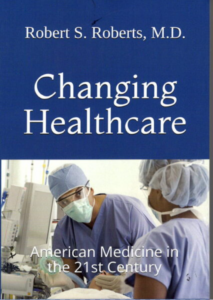Operation Warp Speed produced the fastest new vaccines ever since mankind began developing vaccines to combat disease. The Pfizer and Moderna vaccines are being widely disseminated in this country and around the world. But the sheer volume of vaccines needed to protect a world population makes this a daunting task.
The good news is yet another vaccine is ready for approval. Johnson & Johnson’s new Covid 19 vaccine will soon seek FDA approval for use in this country. The company released data this week showing the vaccine is about 70% effective against the virus with only one shot.
Dr. Scott Gottlieb, resident fellow at the American Enterprise Institute and former FDA commissioner, says the FDA will review the evidence thoroughly, but the preliminary data is promising. Although the 70% effectiveness lags behind the Pfizer and Moderna numbers of 95% and 94.1%, both of those require two shots. J & J is collecting more information to determine whether a booster 2nd shot could improve the efficacy. The Pfizer and Moderna vaccines had about 70% efficacy after only one shot.
The J & J vaccine works differently from those developed by Pfizer and Moderna. It uses a weakened virus form of a common cold known as an adenovirus. A single dose of this vaccine provoked a strong immune response in animal and human trials. The Phase 3 trials included over 60,000 people beginning in late September, making it the largest late-stage clinical trial of Covid 19 vaccines. It was carried out at nearly 180 locations in the U.S. and eight other countries.
Other vaccines already in widespread usage in other countries include the AstraZeneca/University of Oxford vaccine widely used in the United Kingdom. It has shown an effectiveness of about 66%. Novavax is a protein-based vaccine consisting of two shots given 21 days apart. It delivers proteins resembling the protein spike jutting out from the coronavirus. It is expected to be available by this summer. The Russians and the Chinese are using vaccines developed in their countries under their regulatory process.
Gottlieb says, “The regulatory process must encourage this kind of portfolio diversification, while allowing tweaks to keep ahead of the virus’s twists and turns. The FDA is working on guidance to address new variants, which will include a pathway for updating vaccines. The model should be the flu-vaccine process. Every year scientists develop the basic components for flu vaccines that are capable of targeting many different strains of the virus. But only the three or four strains expected to be most prevalent are put into production. . . . The FDA should do the same for Covid.”
Which vaccine should you get? The first one available. Although the clinical trials have shown slight variations in effectiveness, the most important thing is to get vaccinated. The only way to achieve herd immunity is for the largest number of people to be vaccinated. This will protect not only those who are vaccinated, but also those who are not. It’s the best way for the world to return to some new semblance of normalcy. We are blessed to have so many new vaccines available in such a short time since this new coronavirus was identified.


